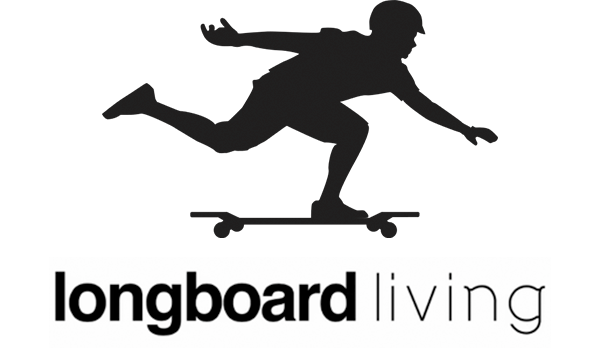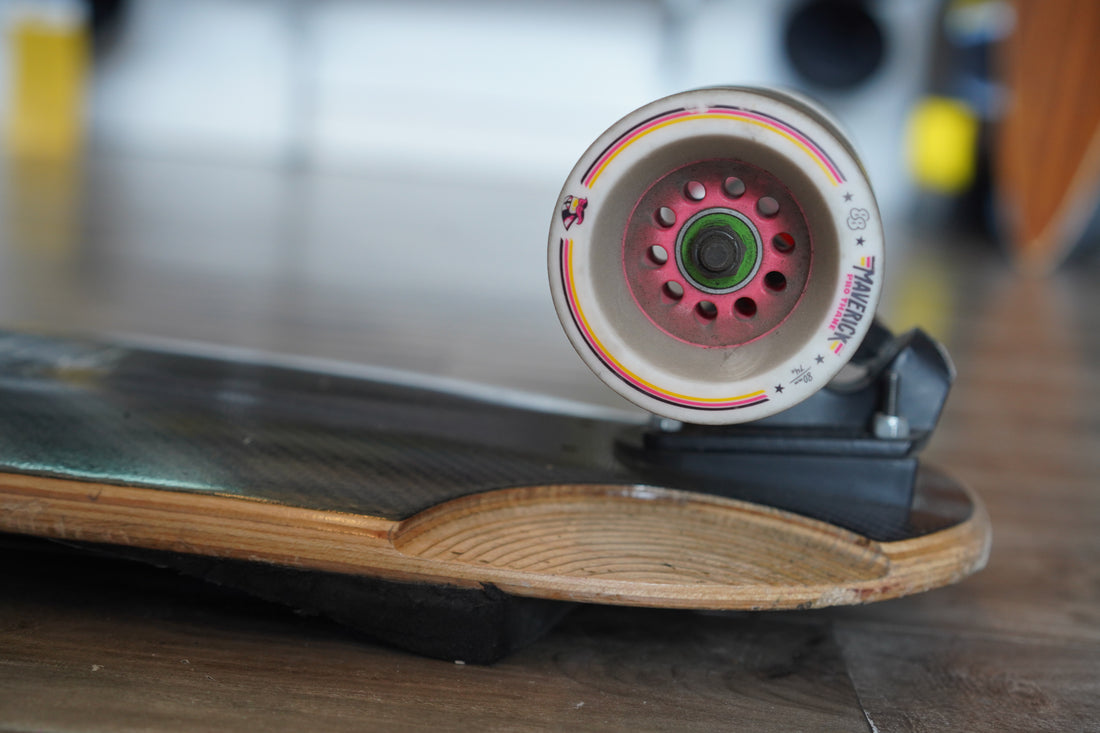This past weekend, I was fortunate enough to take home a set of Maverick Pro wheels from newcomers 88WheelCo to test at an outlaw race and give my thoughts on the wheel.
Disclaimer: I am by no means a pro rider (this was my first downhill race i've competed in), however I do feel that I have sufficient experience skating downhill on various gear to provide a comprehensive enough review. That being said, this was the first grippy, race-style wheel i've ever ridden.

MY SETUP AND RIDER PROFILE
These wheels were tested on my Landyachtz Small Blind, coming in at 29.5" length and 9.25" wide. I had my wheelbase at the 21" option and I was riding with a torque block placed just in front of the rear mounting hardware and a Riptide Inside footstop placing my feet over the bottom two bolts in the front. For trucks, I have Bear Gen 6 130s. My front truck has a 50 degree baseplate while my rear baseplate is 40 degrees with a seven degree angled riser, creating a 33 degree total angle. My bushing setup is as follows: Front - Venom HPF 87a plug boardside, 85a roadside. Rear - 90a plug boardside, 90a plug roadside.
Thus, this review is coming from the perspective of a 130lb rider on a modern, small board downhill setup. Note that wheel performance varies depending on rider size, weight and board setup.

FIRST THOUGHTS
In preparation for the race on Saturday, I took the wheels out on Thursday to get used to them, as I had never skated a wheel of style before (big, wide and grippy). I was coming from scrubbed green Powell Kevin Reimer 62mm 75a's (commonly known as Kevo's), which are known to be quite slippery and are commonly used as a fast-freeride wheel. My first impressions were that
1. I felt much higher off the ground thanks to their large size and added height.
2. They were very heavy wheels, my board became notably more sluggish (harder to push, turning was a little slower).
3. They felt very planted and much less susceptible to smaller, jerky inputs.
I also noticed they accelerated a bit slower than my Kevo's but the difference was not as substantial as I expected it to be.

THE SLIDE
As soon as I put my glove down for a heelside predrift, I was met with a smooth slide initiation, but rather aggressive braking power that nearly threw me off. If you are not prepared for how quick these slow you down, these wheels take some getting used to. Additionally, I found that these wheels were much less forgiving with overall glove-down technique. They demands good form. It's well-known that with a small, top-mounted setup, it is crucial to weight the front foot, especially when breaking traction. You really have to exaggerate this with these wheels. I'm sure this is the case with all big, grippy race-style wheels but it was definitely eye-opening to see just how much my Kevo's let me get away with in terms of technique.
That being said, it only took me about 10-15mins to get used to this and once I did, I found they actually slid very smooth and consistent, despite the aggressive braking. The edge of traction is very easy to control. The urethane formula is really grippy so it doesn't slide unless you really want it to. This helped me take super-fast lines where my Kevo's likely would have began to loose grip. The hookup is fairly snappy, but not quite as aggressive as I anticipated. However, it still may throw you a little off-balance if you have never ridden a wheel like this, but if you have decent form, this shouldn't be an issue. And if you don't, these wheels will help you learn the hard way. Just point your shoulders in the direction you want your board to be for the hook up (this is typically at the corner's apex) and the wheels will listen.

HOW FAST?
Very. It does take a little longer for these wheels to get up to speed, but once you do, they just keep on accelerating. Flats or inclines after a long decline are where you really notice the size and speed increase. They hold their speed for much longer than any other wheel I've tested. One detail I find that is often overlooked is how big, heavy wheels not only go faster, but also increase stability. A wheel with substantial mass and momentum will want to roll forward more and will be less susceptible to tiny, accidental movements at speed, which could trigger wobbles on a lighter wheel. I felt super planted and confident going faster than I ever did on any of my previous wheels.
RACE REVIEW
Once I showed up to the event, I quickly realized that I had the biggest wheels there, by some margin. Additionally, the track was much smaller and shorter than I realized, which I thought initially would put me at a disadvantage with such big wheels, as they needed a little more time and space to get up to a speed that would blow past any smaller wheels, which would accelerate quicker. My concerns were quickly diminished though, as throughout the day, they left the line and got up to speed much quicker than I expected. It was an all-grip course and they held on and never got close to breaking traction. Once they got up to speed, they began to feel much more nimble and I felt like I had more freedom over my line choice and gave me more confidence during side-by-side racing when the ideal line may be impeded. I somehow came away with my first win! (Although I am unsure as to how much of my success could be attributed to the wheels). However, these were definitely not the right wheels for the track we raced on. These maybe would not be the fastest wheel on short tracks or small hills. The big wheel advantage will only shine on longer roads in order for them to get to speeds greater than that of smaller wheels.

DURABILITY
I've only skated these wheels for three sessions at the time of writing this, so I am unable to speak for their durability for now, but I will post an update when I've worn them down a little more. From what I've noticed thus far, they wear quite slowly and very evenly. What i've typically found with wheels that i've ridden, is that the urethane tends to show wear in the forms of cracks or chunking, but with the Mavericks, the wheel showed absolutely no signs of wear and the urethane surface was still just as smooth as it was when I first took them out of the package.
The skin lasted a little longer than they did on my Kevo's, but not by a significant amount. With skin, the braking and hookup was notably more aggressive. When I broke through the skin, the braking was just as strong but just felt much easier to manage. The hookup also became notably less aggressive and inspired a bit more confidence in my line choice.

OVERALL THOUGHTS
All in all, I think this is a great wheel for long and fast open-road downhill riding. The urethane is of high quality, lasts long (from what I've seen) and I find it to be an amazing wheel to improve your downhill racing technique. The slide initiation is quite friendly but the braking force is strong enough to slow you down enough in any given situation. Although I've never skated more well-known, square lip race wheels before like Venom Magnums or Seismic Alphas, I have a feeling that the Mavericks are a little more beginner-friendly than wheels commonly found on the podium. That being said, once the skin is gone, they can be used as fast-freeride wheels due to their consistent slide and intuitive hookup. I'll be sure to update this after I spend more time on them, but they've been amazing so far!

